Yeovil People
Ernest John Brook farr
Rag, Iron & Metal Merchant
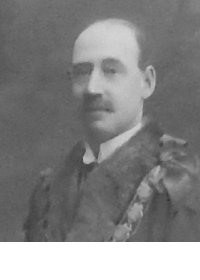 Ernest John
Brook Farr ,
known as Johnny, was
born in 1877 in
Yeovil, the
second son and
fourth child of
the six children
of Marine Store
Dealer Joseph
Farr (1843-1901)
and Elizabeth
née Belben (b
1843). In the
1881 census
Joseph and
Elizabeth, both
aged 38, were
living at 18
Vicarage Street
with five of
their children;
Mary Edith aged
11, Rosa Lilly
aged 7,
Alexander aged
5 and Ernest
and Minnie both
aged 4. All the
children were
listed as
scholars. Joseph
Farr was listed
as a Marine
Store Dealer of
18 Vicarage
Street in
Whitby's Yeovil
Almanack
Advertiser of
1882 and
Collins' Yeovil
Directory of
1907, but was
noted as a
'Marine Store
Dealer of
Middle
Street' in
Whitby's
directories of
both 1898 and
1903.
Ernest John
Brook Farr ,
known as Johnny, was
born in 1877 in
Yeovil, the
second son and
fourth child of
the six children
of Marine Store
Dealer Joseph
Farr (1843-1901)
and Elizabeth
née Belben (b
1843). In the
1881 census
Joseph and
Elizabeth, both
aged 38, were
living at 18
Vicarage Street
with five of
their children;
Mary Edith aged
11, Rosa Lilly
aged 7,
Alexander aged
5 and Ernest
and Minnie both
aged 4. All the
children were
listed as
scholars. Joseph
Farr was listed
as a Marine
Store Dealer of
18 Vicarage
Street in
Whitby's Yeovil
Almanack
Advertiser of
1882 and
Collins' Yeovil
Directory of
1907, but was
noted as a
'Marine Store
Dealer of
Middle
Street' in
Whitby's
directories of
both 1898 and
1903.
A Marine Store Dealer was, in fact, nothing to do with boats or the sea but was simply a general dealer at the lower end of the market, dealing with the very poorest people with items usually worth a farthing or a halfpenny. Despite the fact that a Marine Store Dealer was a very lowly trade, described by social researcher Henry Mayhew in his book 'London Labour and the London Poor' (1851) as merely being one step above those who dealt in fats and greases, Joseph Farr managed to send Ernest to boarding school and the 1891 census recorded Ernest as a 14-year-old boarder at the District Independent College, Staplegrove, Taunton.
In 1903 at Weymouth, Dorset, 26-year-old Ernest married 23-year-old Minnie Ethel Amy Horsey (1880-1961), originally from Bournemouth, Hampshire. They were to have three children; Vera Jessie (b 1904), Elsie Muriel (b 1906) and Freida Josephine (b 1910). Immediately after their marriage Ernest and Minnie had lived briefly in Hornsey, Middlesex where their first daughter Vera had been born. By 1906 however the family were living in Yeovil where Elsie was born.
As a young man, Ernest joined the army and served in the South African War. The Second Boer War (11 Oct 1899 – 31 May 1902) was fought between the British Empire and two Boer states, the South African Republic and the Orange Free State, over the Empire's influence in South Africa. It is also known variously as the Boer War, Anglo-Boer War, or South African War. On leaving the army, he became a Reservist.
In the 1911 census the family were recorded living at 45 Hendford Hill and living with them was Minnie's mother, Louisa Horsey, and a domestic servant. Ernest listed his occupation as a 'Rag, Iron & Metal Merchant'. He also listed himself as an employer.
It is likely that at this time Ernest was operating in a building and yard off Stars Lane once in the ownership of wealthy glove manufacturer and mayor of Yeovil Edward Raymond from at least 1850 until his death in 1880. Raymond lived in Mars House on the corner of Stars Lane. Behind Mars House, at the end of Raymond's orchard, was the building described in 1869 as "newly erected wool stores", seen on the map below, which were in the occupation of Raymond's son-in-law, Benjamin Chaffey. Ernest Farr, later his company EJ Farr & Co, traded in these premises until the 1960s.
Ernest was a Freemason and was initiated into Yeovil's Lodge of Brotherly Love on 8 April 1914.
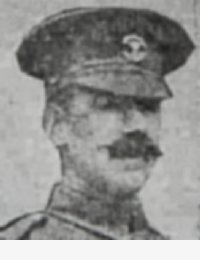 At
the outbreak of
war in 1914, as
a Reservist,
Ernest was
called up and
was sent to
France where he
served with the
rank of
Sergeant. The
photograph at
left shows him
in uniform
wearing the cap
badge of the
Somerset Light
Infantry.
At
the outbreak of
war in 1914, as
a Reservist,
Ernest was
called up and
was sent to
France where he
served with the
rank of
Sergeant. The
photograph at
left shows him
in uniform
wearing the cap
badge of the
Somerset Light
Infantry.
During August 1915, Ernest was wounded in action, as described in the letter below.
He was later discharged from the army as unfit for further military service because of the wounds he received.
|
A
letter
published
in the
Western
Gazette,
13
August
1915
from
"Letters
home to
Yeovil
in the
Great
War,
1914 –
1919"
by Jack
Sweet |
He was prominent in the town's affairs and served on the council for many years. He was elected Mayor of Yeovil and served during 1921 and 1922. In 1923 the Yeovil & Petters United Football Club became Yeovil Football and Athletic Club Limited, the company being registered on 3rd May 1923. Ernest Farr was appointed the first Chairman of the Limited Company.
Ernest John Brook Farr died in Yeovil on 11 March 1946. His will was proved at Bristol in July 1946 and his effects were valued at £4,806 (around £500,000 at today's value). The company, EJ Farr & Co, today trades at Buckland Road.
MAP & Aerial photograPH
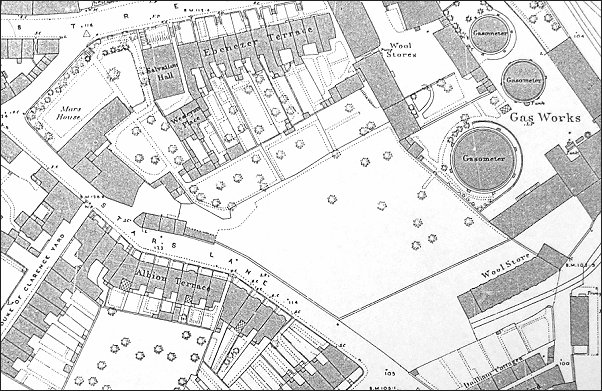
The 1886 Ordnance Survey showing at top left Mars House and its large garden on the corner of Stars Lane and South Street, owned by mayor of Yeovil Edward Raymond from at least 1850 until his death in 1880. Behind Mars House were what were described in 1869 as "newly erected wool stores", seen at bottom right, which were in the occupation of Raymond's son-in-law, Benjamin Chaffey. The open land at the centre of the map, formerly an orchard, was also owned by Edward Raymond.
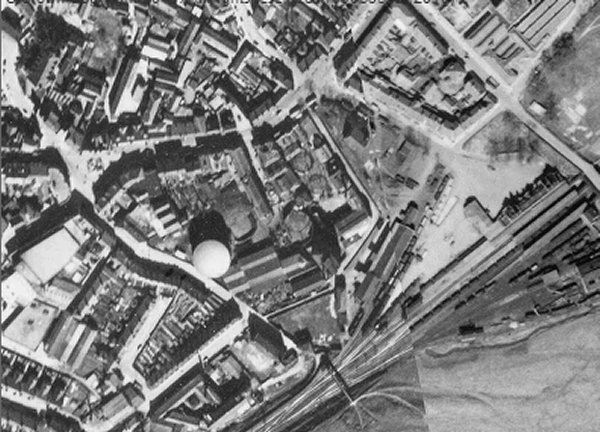
This 1946 aerial photograph shows the gasworks, at centre, which had by this time extended as far as Stars Lane next to the new, large gas holder just left of centre. The right-hand side is occupied by Yeovil Town railway station. Gas Lane is the narrow white 'J'-shaped road just right of centre
gallery
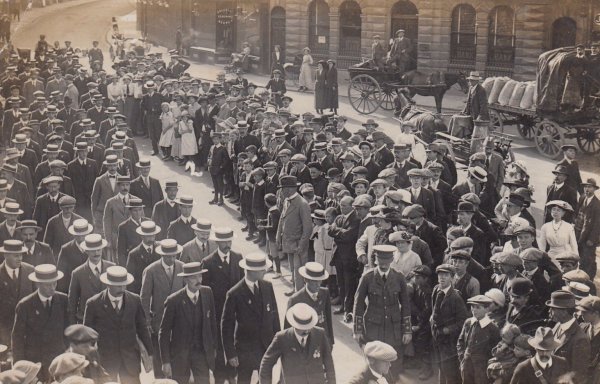
The 'Straw Hat Brigade' Yeovil Reservists marching off from the Borough to the Town Station at the outbreak of war in 1914. Yeovilians known to be in this photograph include Ernest Farr.
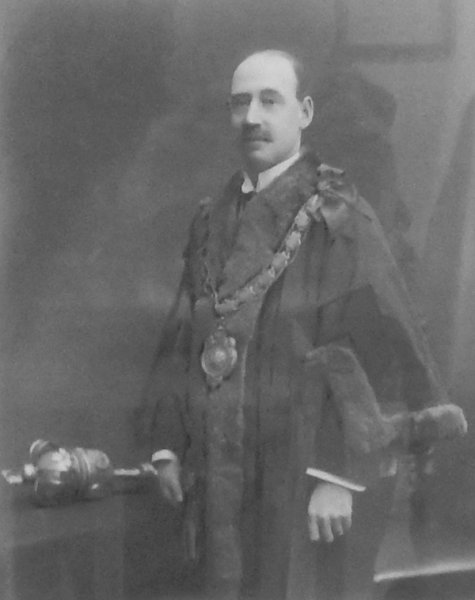
Ernest Farr in his mayoral robes. Photographed in 1921.
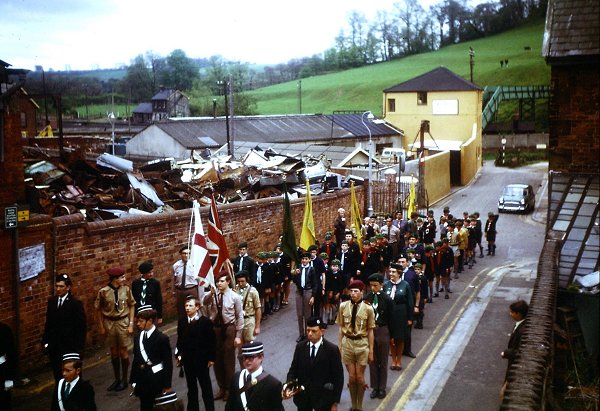
Photographed by
Doug Keyse,
courtesy of Andy
Keyse
A detachment of Boy's Brigade, Scouts and Cubs assembles at the bottom of Stars Lane for the St George's Day parade in 1968. At left many people will remember the scrapyard of Johnny Farr. In the background are the lower slopes of Summerhouse Hill with the footbridge over the railway at top right. At extreme right is the end of the first house in Summerhouse Terrace.
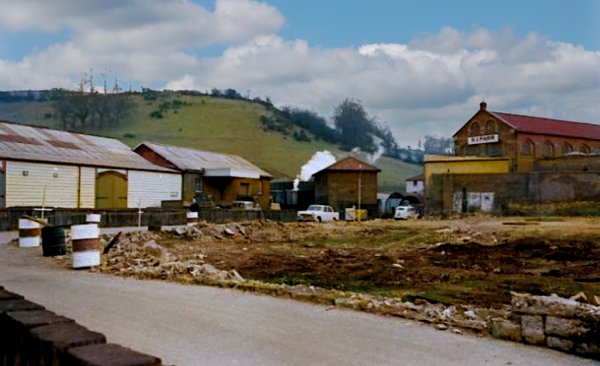
As it reached the British Rail Parcels Office Gas Lane turned to the southwest. The gas works site has been cleared at right and in the distance at right the large building had originally been a wool store built around 1869 but by this time was the premises of scrap merchants EJ Farr & Co.
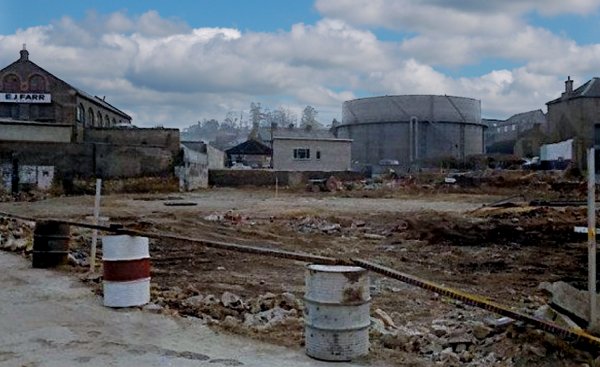
Having turned the corner in Gas Lane, this view looks west with Farr's building at left and the partially-cleared gas works site at right. The gas works site would, for many years, become Town Station Car Park.
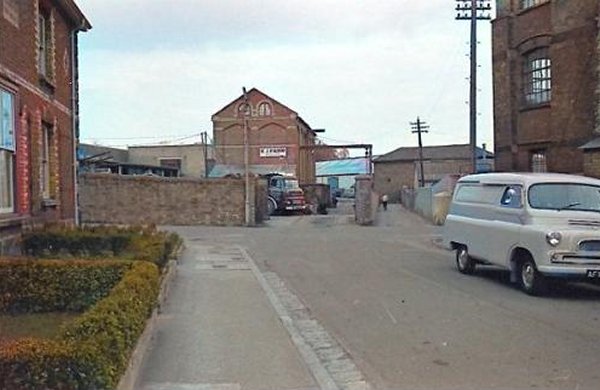
The photographer is standing in Summerhouse Terrace, with the first house in the terrace at left and Foundry House at right, looking to the junction with Stars Lane running across the photograph. The other end of Ernest Farr's building and the entrance to his scrapyard takes up much of centre left while to its right, with the man seen walking along, is the Stars Lane entrance to Gas Lane.
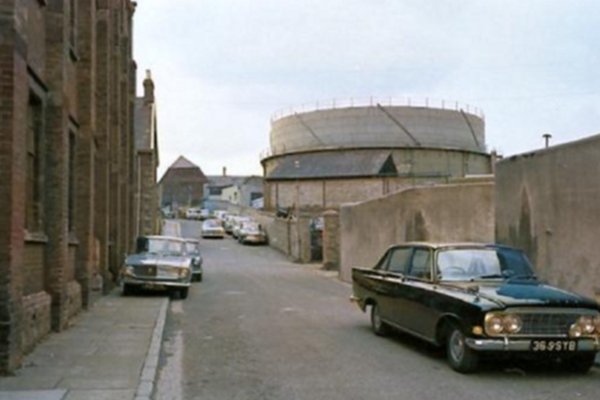
Taken from the very bottom of Stars Lane, looking north, with Foundry House at left and the gas works at right. The entrance to EJ Farr & Co's scrap yard is marked by the two brick piers at the centre of the photograph.
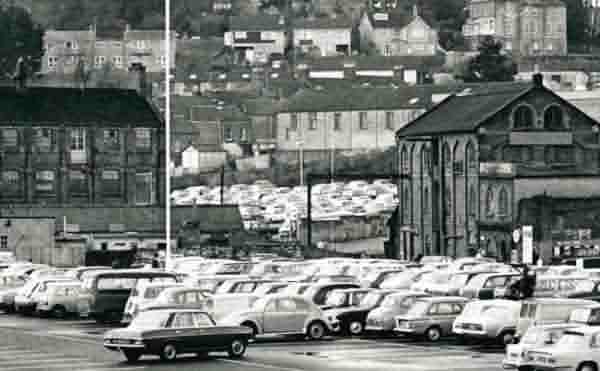
The view from Old Town Station car park in the late 1960s / early 1970s looking towards Pen Hill. Farr's building is at the right, Foundry House in Stars Lane is at the left.
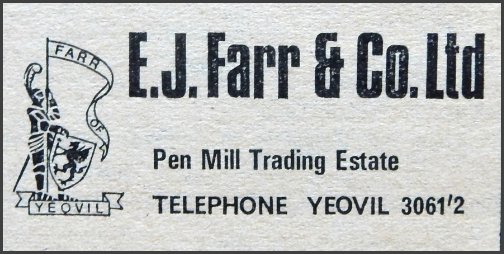
From my
collection
EJ Farr & Co Ltd's advertisement in the 1970 edition of Kelly's Directory indicating that by this time the company had moved premises to the Pen Mill Trading Estate.
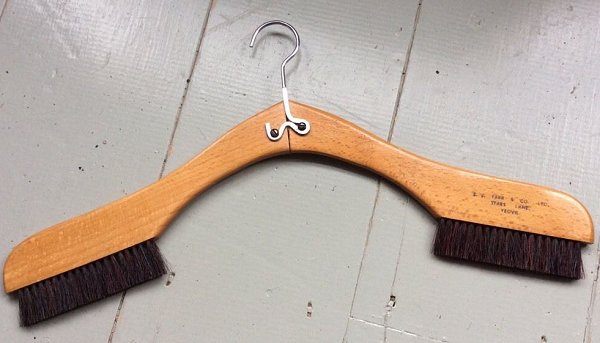
From my
collection
A really unusual item - a coat-hanger that splits in two to become two clothes brushes. Presumably sold by Farr in the 1940s.
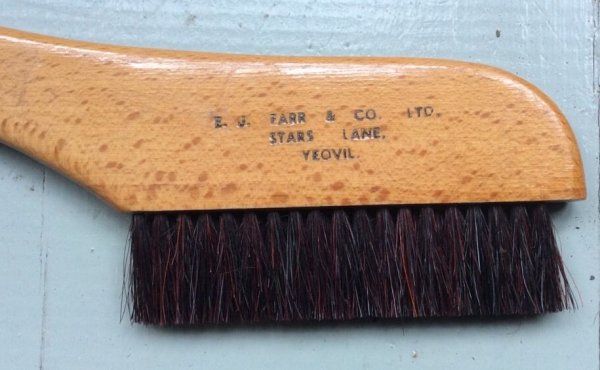
From my
collection
An enlargement showing Farr's stamp on the coat-hanger / brush.